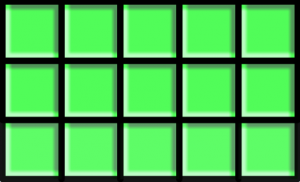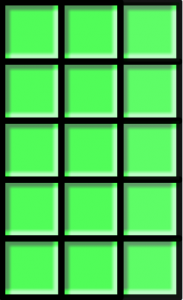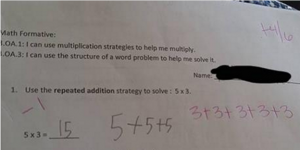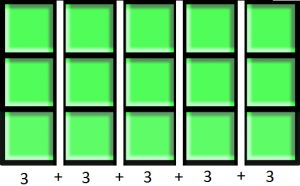What is an Array?
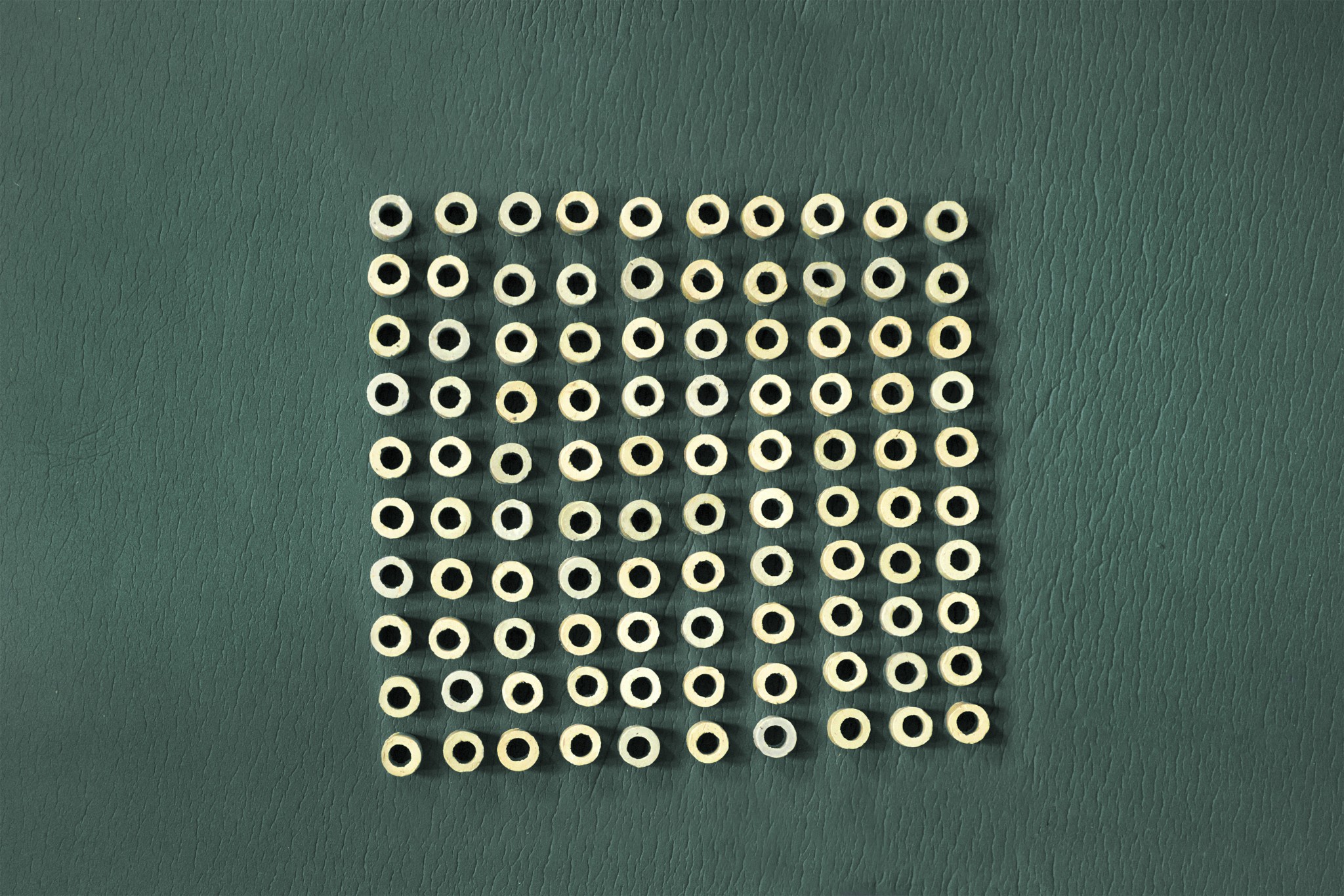
And What Does it Have to do with Multiplication?
An array is simply one way to illustrate multiplication visually, and it has nothing to do with the CC math standards, but more on that in a minute.
Our second-oldest daughter has 2 boys in school, one now in fourth grade and one in six grade, and she lives next door. Because of that we have frequent conversations, and it quite often revolves around her two boys.
And, of course, since my company teaches math online, the conversation is often about how they’re doing in school, and in particular, how they’re doing in math (we’re grandparents, after all).
A couple of years ago, she mentioned that she was baffled by a homework assignment for one of the boys in math. When I asked what it was about, she growled under her breath and said it had to do with something called an array, and then she voiced what has now become a familiar refrain for many parents:
What the heck is an array?
Most parents today are encountering the notion of an array for the first time as a result of the implementation of the Common Core Math standards, and they’re understandably put off by it.
Most parents have never heard of an array. It got introduced into the math curriculum on a widespread basis along with the Common Core math standards. So, the question is, “Is the use of arrays a good idea or a bad idea?”
I would argue that it can be a good idea, but only if it is used properly. It is actually a very good way to further support a child’s understanding of what multiplication is. But, having said that, I must point out that the reason I say this has absolutely nothing to do with CC math.
We have been using arrays in our curriculum for over 10 years, long before the CC standards were concocted. Unfortunately, it is one of those topics that have been “hijacked” by the CC and used in ways that go way beyond reason, like the example below.
However, when used properly, arrays are a great way to add additional clarity to the notion of multiplication.
Let me make that clear. It’s ONE way to illustrate multiplication, but it certainly is NOT the ONLY way.
And, it should be used ONLY in addition to more traditional definitions of multiplication.
For example, when we teach multiplication, we start with a definition of multiplication as repeated addition. For example, we teach that the multiplication 3 x 5 means:
3 + 3 + 3 + 3 + 3
Unlike the approach viewed widely on social media, we also teach that it also means:
5 + 5 + 5
This can be shown in an array like this:
When you flip it on its side, it looks like this:
Each of these arrays represent the same thing (because multiplication is commutative), so forcing students to write it only one way, like the example below, is an arbitrary convention, which is a bad idea.
No. No. No.
Using arrays is simply a way to illustrate repeated addition visually.
It’s easy to see that when you separate the columns of an array like this:
…you can then explain how repeated addition is related to an array, and how an it’s related to “counting by a number” as well.
But, when you do that on paper, it gets to be hard to follow pretty quickly.
But, fortunately, there’s a much better way to do it.
It’s one of the main reasons we use the computer to teach math. On the computer, you can take a very “static” explanation like this, and improve on it.
You do that using the power of the computer to show things in a multimedia format (i.e., graphics, animation and narration).
The best way to illustrate this approach is to see it in action.
You can do that using the links below. (Be sure to have your speakers on.)
This link (Multiplication as Arrays) is to a lesson that comes after students have learned that multiplication is repeated addition, and how to solve multiplication using repeated addition. It illustrates the basic idea of an array.
This link (Multiplication: Commutative Property) illustrates the fact that multiplication is commutative. That is, that 3 x 5 and 5 x 3 represent the same number.
When you look at these lessons, you can see that it’s very easy to understand what an array represents and how it can be used in teaching multiplication.

